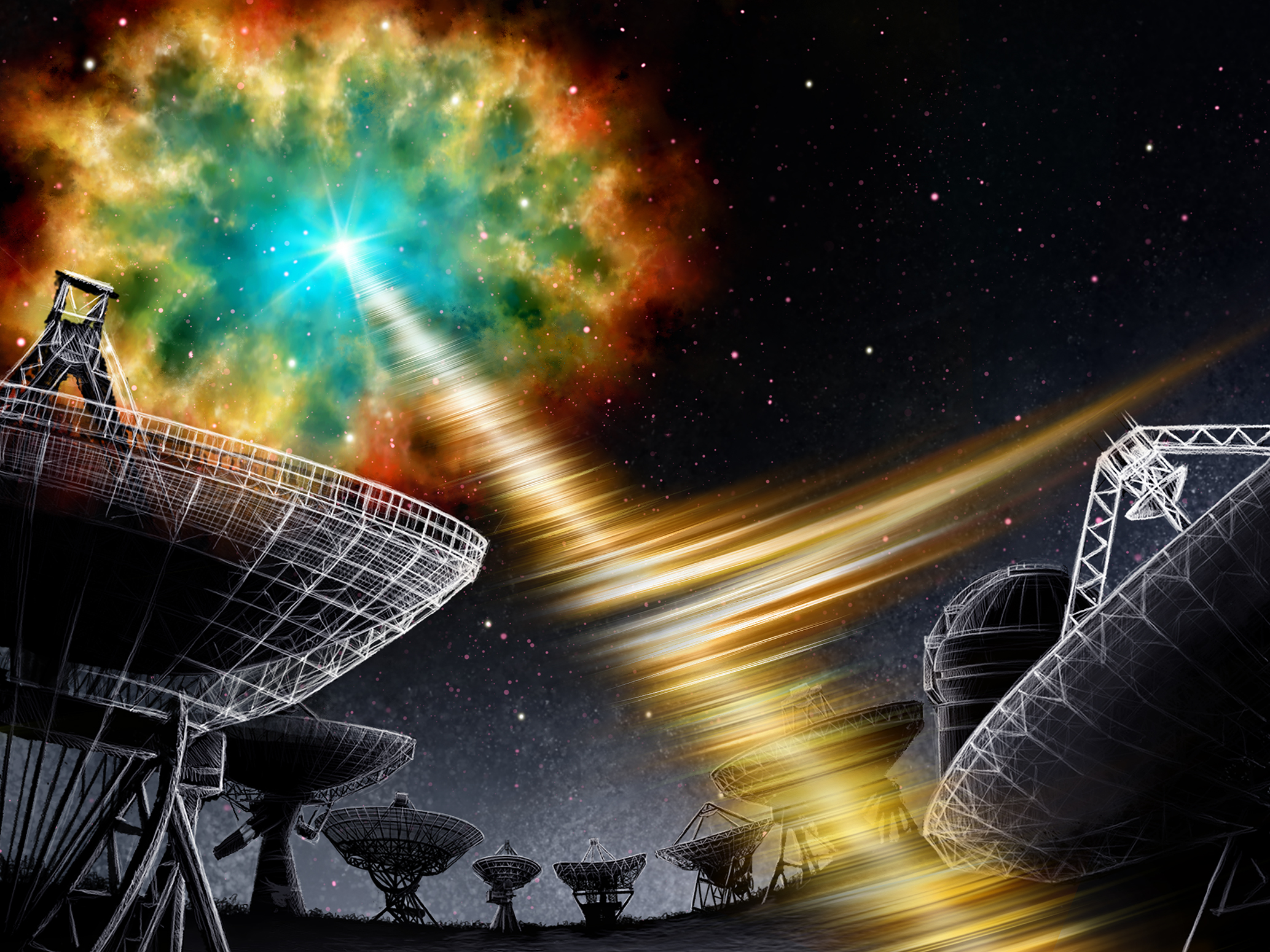
Super sharp images reveal a possible hypernebula powered by a source of fast radio bursts
We have confirmed the association of a second FRB source, called FRB 20190520B, with a potential hypernebula. This FRB was discovered using the 500-m FAST telescope in China and appeared to be associated with a more constant source of radio waves. This more constant source of radio waves hints at a hypernebula powered by the same object that makes the bright radio bursts.
We observed FRB 20190520B using a network of radio telescopes spread across Europe, known as the European VLBI (Very Long Baseline Interferometry) Network or simply `the EVN’. By joining the data of all the dishes located in Germany, Poland, Italy, the Netherlands, Sweden, Latvia, and the United Kingdom, we observed the sky at an extremely high resolution and made super sharp radio images. Such observations allowed an eagle-eye study of the FRB and its surrounding environment. With our EVN observations of FRB 20190520B we were able to constrain the size of potential hypernebula to be less than 30 light years in diameter; that’s three times the size of the famous Crab nebula in our own Milky Way galaxy. We also measured the luminosity of the object to be around a hundred thousand times that of the Sun. The research was published in The Astrophysical Journal Letters.

More information:
“Constraints on the persistent radio source associated with FRB 20190520B using the European VLBI Network” in The Astrophysical Journal Letters, Volume 958, Number 2. DOI: 10.3847/2041-8213/ad083f
Contact:
Shivani Bhandari
ASTRON, JIVE, Dwingeloo, the Netherlands
Email: bhandari@astron.nl
Benito Marcote
JIVE, Dwingeloo, the Netherlands
Email: marcote@jive.eu